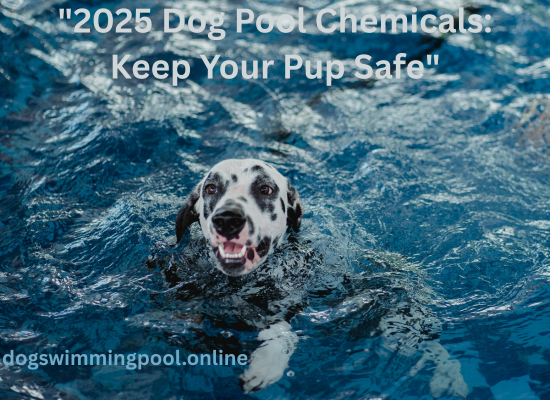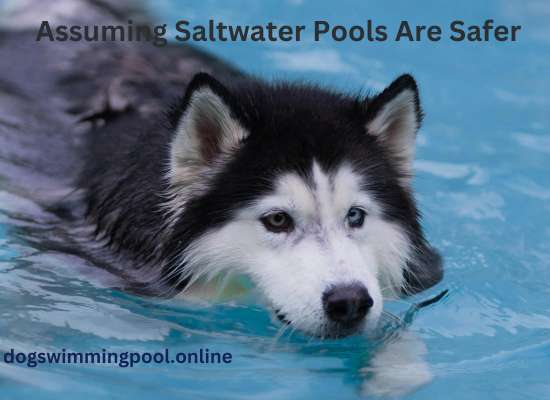Last summer, my neighbor’s bulldog, Bruno, started limping after a swim. Turns out, the pool’s chlorine levels were three times the safe limit for dogs. After a $1,200 vet bill, Bruno recovered, but the lesson was stuck. Like many pet owners, my neighbor didn’t realize that maintaining a dog-friendly pool requires a different approach than a regular swimming pool. Let’s make sure your pup stays safe while enjoying the water.

Why Dog Pool Chemicals Matter in 2025
The Rise of Backyard Dog Pools
With 60% of U.S. households now owning pets (American Pet Products Association, 2024), more people are setting up dog-friendly pools. But here’s the problem: a 2024 ASPCA report found that 34% of pool-related vet emergencies were due to chemical exposure. Dogs are more sensitive to toxins—their skin absorbs chemicals quickly, and they often drink pool water.
Read more: Learn the best way to teach your pet dog to swim
2025 Pool Care Trends for Pet Owners
- Eco-Friendly Chemicals – Sales of plant-based algaecides jumped by 45% in 2024 (Global Pet Expo).
- Smart Water Monitoring – Devices like the Pooli Pro app now track pH levels in real-time and send alerts to your phone.
7 Common Mistakes Dog Owners Make (and How to Fix Them)
1. Using Standard Pool Chlorine
Why It’s Risky: Chlorine can burn a dog’s paws and irritate their eyes.
Lesson Learned: I once used chlorine tablets in my poodle’s pool—she refused to swim for weeks!
Fix: Use bromine or hydrogen peroxide-based alternatives (vet-approved).
2. Skipping Daily pH Checks
The Science: Dogs swimming in pH levels of 6.5–7.5. Anything higher can dry out their skin.
Pro Tip: Keep test strips by your coffee maker. “I check levels every morning—it’s faster than making coffee!”
Read more: The need for swimming pools for dogs and the dangers of drinking swimming pool water
3. Overusing Algaecides
Study Alert: A 2023 University of Florida study linked excessive algaecides to liver damage in retrievers.
Solution: Install UV filters or introduce algae-eating snails (yes, really!).
4. Assuming Saltwater Pools Are Safer

Myth Busted: “Saltwater pools are safer for dogs.” Not necessarily—salt can cause dehydration if ingested.
What to Do: Rinse your dog after swimming and always provide fresh drinking water.
5. Storing Chemicals in Reach of Pets
Horror Story: My cousin’s Labrador ate a chlorine puck and needed emergency surgery.
Storage Hack: Use lockable bins labeled “Fido’s Pool Supplies” and store them out of reach.
6. Ignoring Seasonal Adjustments
Key Insight: Heat speeds up chemical reactions. In summer, test your pool water twice a day.
7. Adding Scented Pool Enhancers
Why It’s a Bad Idea: Fragrances contain phthalates, which can be harmful—and dogs dislike synthetic scents anyway.
My 5-Step System for a Dog-Safe Pool
Step 1: Morning Routine
- Test pH and chlorine levels before breakfast (I use the Pooli Pro app—it’s like a Fitbit for your pool).
- Skim debris. “My terrier, Luna, drags in half the yard—leaves clog the filter fast!”
Step 2: Choosing the Right Chemicals
- Look for NSF/ANSI 50 certification (safe for animal exposure).
- Recommended Brands: Natural Chemistry’s Pool Perfect® and EcoSmarte.
Step 3: Weekly Deep Clean
- Drain 25% of the water weekly to prevent chemical buildup.
- Scrub the pool walls with baking soda (gentle on paws).
Step 4: Post-Swim Care
- Rinse your dog with a hose. “I keep a towel and dog-friendly shampoo poolside—it’s a lifesaver!”
- Check paws for redness or cracks.
Step 5: Winterizing Your Dog’s Pool
- Use a pool cover to keep debris out.
- Store chemicals in a climate-controlled shed. “Mice chewed through my hoses once—never again!”
conclusion
Keeping your dog’s pool safe means using pet-friendly chemicals, testing water daily, and avoiding harmful additives. Small adjustments, like proper storage and rinsing after swims, prevent health risks. With smart monitoring and eco-friendly options, pool care is easier than ever. A little effort ensures your pup stays happy, healthy, and splash-ready. Dive into safety and enjoy the fun!
Read more: Best Water Pools for Dog Swimming What You Need to Know
FAQ
1. Can I use baking soda to balance my dog’s pool?
Yes! It’s a quick fix for pH imbalances, but use sodium bicarbonate-based buffers for long-term stability.
2. How often should I change the pool water?
Every two weeks in summer (per Texas A&M’s 2024 guidelines). In winter, once a month.
3. Are saltwater pools safer than chlorine pools?
Not necessarily. Salt can dehydrate dogs, so always supervise them while swimming.